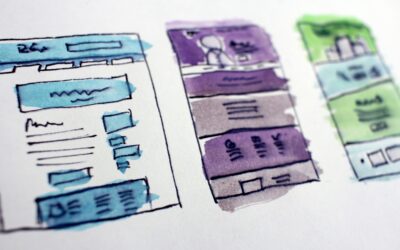Email marketing isn’t dead—but lazy email writing is. If your inbox is filled with robotic messages, endless promotions, or newsletters that make your eyes glaze over, you’re not alone. Most emails don’t convert because they’re missing one key thing: real human connection.
As a business owner in a small town like Lyons, KS, you know the value of a warm introduction, a firm handshake, and a reputation built on trust. That’s exactly how your emails should feel—like a conversation, not a commercial.
At VisiGuide Solutions, I use a no-fluff, bold-but-friendly formula to create email campaigns that earn replies, generate referrals, and drive actual results. And today, I’m breaking it all down for you—step by step.
Why Email Marketing Still Works (When It’s Done Right)
Email isn’t just another box to check on your marketing list. It’s one of the only channels you own. Social media platforms can change their rules or algorithms overnight, but your email list? That’s yours.
More importantly, your email list is full of people who have already shown interest in what you do. That makes them the warmest leads you’ve got. But if you’re not nurturing that list with smart strategy and a personal touch, you’re leaving opportunity on the table.
Did You Know?
According to Campaign Monitor, for every $1 spent on email marketing, the average ROI is $42. That’s higher than any other digital marketing channel.
(Insider Tip from Sherri): If you’re not seeing results from email, it’s not the medium—it’s the message.
The VisiGuide Email Formula That Actually Converts
Let’s walk through the exact process I use for writing emails that work. This is the same framework I teach clients during our free strategy sessions—and it’s designed for small businesses that want to connect, not just convert.
1. The Hook – Write Subject Lines That Feel Personal, Not Pushy
Your subject line is your foot in the door. If it’s bland or salesy, your email won’t get opened—no matter how good the content is.
Great subject lines:
- Spark curiosity
- Sound like they’re from a real person
- Avoid spammy or overused words like “FREE,” “URGENT,” or “ACT NOW!”
Some of my best-performing subject lines:
- “Can I ask you something real quick?”
- “This changed the way I do business”
- “Hey [First Name]—here’s something bold”
What these have in common: they’re simple, conversational, and unexpected.
Insider Tip from Sherri:
Don’t write the subject line first. Draft your email, then come back and write a subject that reflects the real heart of what you’re saying.
2. The Heart – Build a Real Connection in the First 3 Sentences
Once they open your email, you have about 8 seconds to keep their attention. That means ditching the long-winded intros and getting real, fast.
Here’s how I structure the intro:
- Sentence 1: Address a shared struggle or feeling
- Sentence 2: Show empathy or offer a surprising insight
- Sentence 3: Hint at the value coming in the rest of the email
Example:
“Ever hit send on an email and hear… crickets? Yeah, me too. That’s why I changed how I write—and started seeing real replies.”
That’s warm, relatable, and to the point. No hype. No jargon. Just heart.
3. The Help – Make the Value Obvious (and Useful)
Your readers should feel like they got something helpful even if they never reply. That’s how you build trust and establish yourself as the expert in your space.
Great email content:
- Answers a question they already have
- Teaches one clear thing they can implement
- Aligns with your core offer or service
If you’re a photographer, show a quick tip on lighting. If you’re in real estate, share a script for handling a low appraisal. If you’re VisiGuide Solutions, you break down how small-town businesses can build big-time visibility without big-agency prices.
And always, always, use your own voice. Don’t water it down. Be bold, kind, and clear.
4. The Ask – One CTA, One Action, No Confusion
This is where most emails go off the rails.
Too many links. Too many choices. No direction.
Instead, stick to one clear next step. And tie it directly to the help you just gave them.
Example:
“If this sounds like the kind of clarity you want in your own emails, let’s talk. I’m offering a free strategy session—just hit the button below to book yours.”
Common Email Mistakes That Kill Your Results
Let’s break down what not to do. If any of these look familiar, don’t worry—we’ll fix them.
- The “Newsletter Novelist”
You cram 5 updates, 3 offers, and a whole life story into one email. It’s overwhelming. Stick to one message per email. - The “Buy Now or Else” Push
Constantly promoting without value makes people tune out. You’re not a used car dealer. Lead with help, not hype. - The “Ghost Writer” Voice
You try to sound corporate or overly polished. That’s not you. Write like you talk. Be friendly, be human. - The “Call to Confusion”
You include three different CTAs: Book Now, Learn More, Download This. Just pick one. - The “List-forgetting” Business
You built a list… and then never emailed them. Out of sight, out of mind. Stay consistent, even if it’s once a month.
Did You Know?
Email lists decay at about 22% per year, meaning your readers lose interest or change addresses. Staying consistent keeps your list warm and engaged.
(Insider Tip from Sherri): Set a reminder to email your list at least biweekly, even if it’s short and sweet.
The Secret to Email Referrals? Be Referable First
People won’t refer a business they don’t remember—or worse, don’t trust.
But when you consistently show up in their inbox, offering value, sharing wins, and being your bold, helpful self? That’s when the magic happens.
To get more referrals through email:
- Share quick stories of client wins
- Ask permission: “If you know someone who needs this, feel free to forward it.”
- Offer a small thank-you gift or bonus if someone refers a client your way
And remember, referrals don’t come from the ask—they come from the relationship.
Email Sequences vs. One-Offs: Which Works Better?
A one-time email is great, but email sequences (automated, personalized series) help guide leads through a journey. Here’s a simple sequence I use:
- Welcome Email – Your story + what they can expect
2. Value Drop – Teach one helpful thing
3. Testimonial or Success Story – Social proof
4. Offer or Strategy Session CTA – Clear next step
5. Reminder or FAQ – Gently nudge with extra clarity
You can write this once and automate it with tools like MailerLite, ConvertKit, or Flowdesk.
(Insider Tip from Sherri): I recommend starting with just three emails. Don’t overcomplicate it. The key is clarity and consistency.
Want Emails That Actually Work for Your Business?
If your inbox has been too quiet lately, it’s time to flip the script. You don’t need to be a copywriter. You just need a strategy—and your authentic voice.
That’s where I come in.
Book your free strategy session with VisiGuide Solutions today, and let’s craft email marketing that feels right, works hard, and builds relationships that last.




